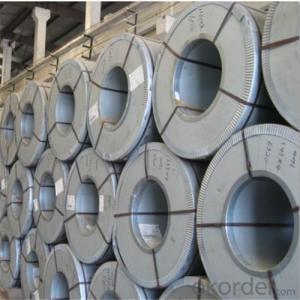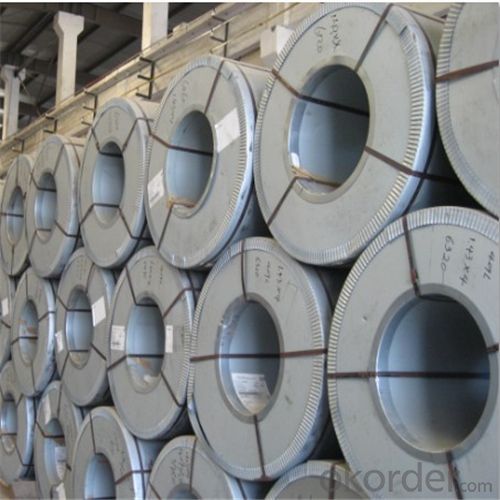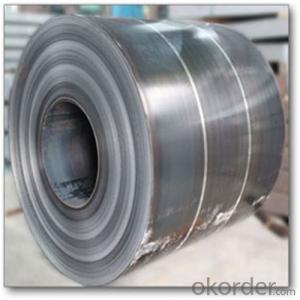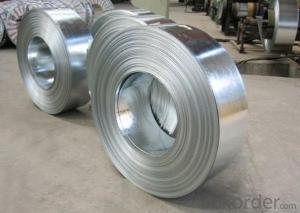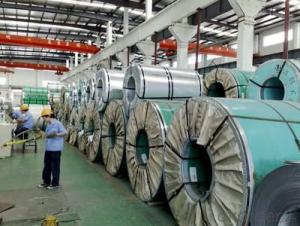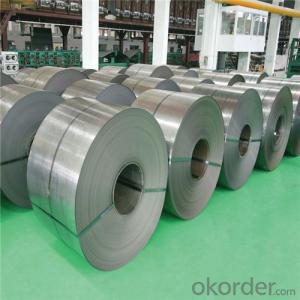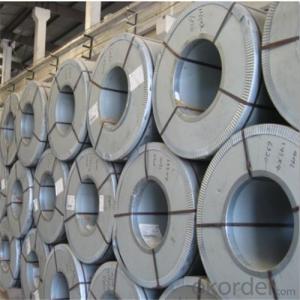Hot Rolled Steel Coil Used for Industry with the Attractive Price
- Loading Port:
- Tianjin
- Payment Terms:
- TT OR LC
- Min Order Qty:
- 25 m.t.
- Supply Capability:
- 10000 m.t./month
OKorder Service Pledge
OKorder Financial Service
You Might Also Like
Hot Rolled Steel Coil Used for Industry
1.Structure of Hot Rolled Steel Coil Description
Rolled to its final dimensions while it’s hot enough to scale, our hot-rolled steel is an amalgamation of the various qualities of steel. It can be in the form of plates, sheet and coils. Our Hot-Rolled Steel Sheets and Coils are applied to a wide range of uses such as automobile, electrical appliance, machinery manufacturing, container manufacturing, shipbuilding, bridge, pipeline, and receive high acclaim from our customers for its excellent quality.
2.Main Features of the Hot Rolled Steel Coil
•High Purity
•Easy control and operation
•High strength
•Fast melting
•Competitive price
•Best Service
3. Hot Rolled Steel Coil Images
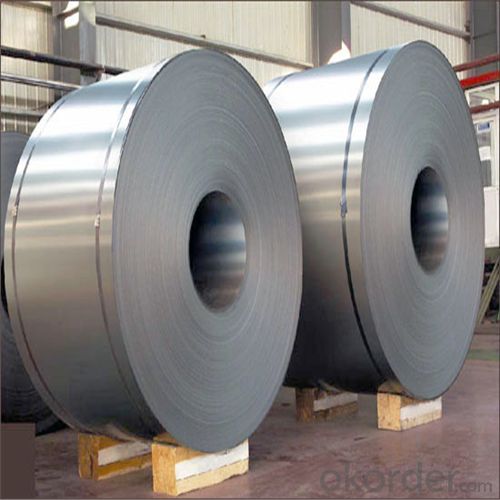

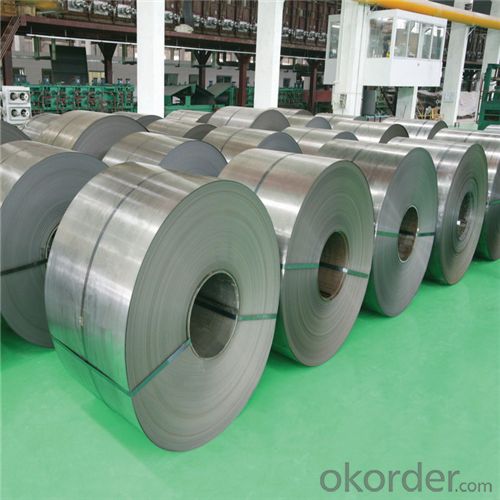
4. Hot Rolled Steel Coil Specification
HOT ROLLED STEEL COIL | |
Thicknenss | 1.5mm-25mm |
Width | 600mm-2000mm |
Sheets length | ---- |
Coil inner diameter | 762mm |
Surface treatement | ---- |
Coil weight | ---- |
5.FAQ of Hot Rolled Steel Coil
We have organized several common questions for our clients,may help you sincerely:
①How about your company?
Annually more than 8000 tons Precision casting and forging parts are exported to markets in Europe,America and Japan. OEM casting and forging service available according to customer’s requirements.
②How to guarantee the quality of the products?
We resolutely put an end to unqualified products flowing into the market. At the same time, we will provide necessary follow-up service assurance.
③How long can we receive the product after purchase?
In the purchase of product within three working days, We will arrange the factory delivery as soon as possible. The pecific time of receiving is related to the state and position of customers.Commonly 7 to 10 working days can be served.
Sincerely welcome to contact us for the future details if any item interest you ,and we will make every effort to assure that your requirements will be satisfied ,and we hope to establish long-term business relations with you on the basis of the equality and mutual benefit.
- Q: Why is iron used to create steel? Why not other elements?
- iron came before steel. iron is what was discovered that, under certain circumstances, became a stronger metal: steel. that is why. its like asking why copper is in bronze. because what we call bronze, is an alloy of copper and tin. if you give a more detailed question, i may be able to give a more detailed answer.
- Q: How are steel coils inspected for dimensional accuracy after processing?
- Steel coils are inspected for dimensional accuracy after processing using various techniques such as laser scanning, ultrasonic testing, and manual measurements. These methods ensure that the coils meet the required specifications and tolerances, guaranteeing their quality and suitability for further use.
- Q: What are the main factors that affect the price of steel coils?
- The main factors that affect the price of steel coils are the cost of raw materials, supply and demand dynamics, production and transportation costs, changes in government policies and regulations, and global economic conditions.
- Q: Can steel coils be coated with anti-slip materials?
- Yes, steel coils can be coated with anti-slip materials.
- Q: What are the main factors that affect the formability of steel coils?
- The main factors that affect the formability of steel coils include the steel's composition, mechanical properties, thickness, temperature, and lubrication.
- Q: i am looking for an exact process of how to forge damascus steel.any tips or pointers and web sites or tutoreals will be helpfull.
- hand made folding knife English tip, blade of Damascus metallic sort Rose, 2,5mm thickness, no liners, teja spring embellished by using metallic report and billet surrounded of chrome metallic. A Damascus blade knife is characterised by using a wavy, mottled visual allure on the blade that’s led to by using the approach used to shape the metallic. the technique of transforming into Damascus metallic is derived from a centuries-previous forging technique used to create blades that grew to become very just about mythical of their attractiveness for power and sharpness it exchange into reported a Damascus knife ought to shrink with the aid of a rifle barrel to boot as with the aid of a hair falling on the blade.
- Q: How do steel coils affect the quality of finished products?
- Steel coils can have a significant impact on the quality of finished products. Their quality, including dimensions, surface condition, and mechanical properties, directly affects the final product's strength, durability, and appearance. Coils with inconsistent dimensions or surface defects can lead to uneven or weak finished products. Similarly, if the mechanical properties of the coils do not meet the required specifications, it can compromise the performance and functionality of the end product. Therefore, ensuring the high quality of steel coils is crucial for achieving superior finished product quality.
- Q: How are steel coils used in the production of electrical switches?
- Steel coils are used in the production of electrical switches as they act as the core of the electromagnetic system. When an electric current passes through the coil, it creates a magnetic field which attracts or repels a movable metal component, allowing the switch to open or close. This mechanism is crucial for controlling the flow of electricity in various electrical devices and systems.
- Q: We have a stain from a pot or bowl in our new expensive stainless steel sink. It looks like a water mark that happens when you leave a glass on a table without a coaster. It's a mark in the shape of the bowl or pot that was there. We left it there overnight:( It's not rust either. Help!
- The best product I have ever come across is Barkeeper's Friend. I use the liquid version rather than powdered version. It is a soft soft abrasive scrub designed for stainless steel. I original found it to use it on all my All Clad pots and pans to keep them beautiful and shining. I also have a stainless kitchen now, sink, stove and fridge...and I use Barkeepers on everything. It is fantastic. If you don't want to go out and find Barkeepers tonight, you can get a similar affect using baking soda mixed with dish soap. Make a good paste to gently rub on stains. Be sure to rinse the stainless steel surface thoroughly, and towel dry. If the stains still remain you can try vinegar. Remember to thoroughly rinse and towel dry. But tomorrow go out and get a bottle of BarKeeper's Friend...you will never regret it. UPDATE: just saw a few other answers, DO Not use steel wool (SOS pads) you will scratch the heck out of the finish and you will not be able to fix it.
- Q: Is it possible to make a homemade blacksmith forge from a washing machine drum made of stainless steel?
- The okorder /
Send your message to us
Hot Rolled Steel Coil Used for Industry with the Attractive Price
- Loading Port:
- Tianjin
- Payment Terms:
- TT OR LC
- Min Order Qty:
- 25 m.t.
- Supply Capability:
- 10000 m.t./month
OKorder Service Pledge
OKorder Financial Service
Similar products
Hot products
Hot Searches
Related keywords
